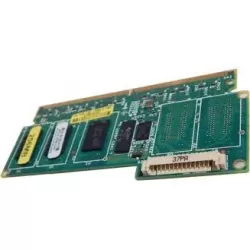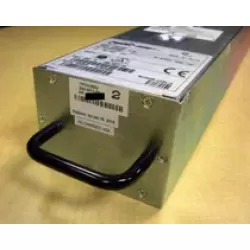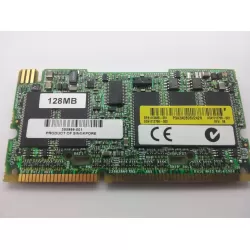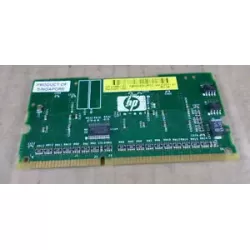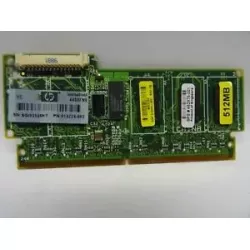Used Cache/Raid Batteries or Refurbished Cache/Raid Batteries of Dell, Apacer, Hitachi, NetApp, HP, IBM, and SUN in UAE.
What is a RAID Cache Battery or Capacitor?
A Cache/RAID battery or capacitor is a component of a RAID (Redundant Array of Independent Disks) controller that is responsible for ensuring that data is not lost in the event of a power failure.
When data is written to a RAID controller's cache, it is temporarily stored in memory before being written to the disk. In the event of a power failure or other system interruption, this data can be lost if it has not yet been reported to the disk.
To prevent this loss of data, RAID controllers use a battery or capacitor to provide power to the cache long enough for the data to be written to the disk. The battery or capacitor acts as a backup power source, allowing the RAID controller to flush the contents of the cache to disk in the event of a power failure.
The battery or capacitor typically has a lifespan of several years and needs to be periodically replaced to ensure that it continues to function properly. Failure to replace a failing battery or capacitor can result in data loss in the event of a power failure or system interruption.
Importance of Cache/Raid Batteries
The importance of Cache/RAID batteries lies in their ability to provide a reliable and consistent power source to the cache memory of a RAID controller. This ensures that the data stored in the cache is not lost in the event of a power failure or other system interruption, which can occur unexpectedly and without warning.
Without a cache/RAID battery, the data stored in the cache memory is at risk of being lost, which can result in data corruption, data loss, or system downtime. This can have serious consequences, especially in mission-critical environments where data availability and reliability are paramount.
The cache/RAID battery acts as a backup power source that provides sufficient power to flush the contents of the cache to the disk, ensuring that the data is saved and not lost. This can help prevent data corruption or loss and minimize system downtime, which can have a significant impact on productivity and revenue.
In summary, the importance of Cache/RAID batteries lies in their ability to provide data protection and ensure data availability, which is essential in mission-critical environments where data reliability and consistency are paramount.
Common Cache/Raid Battery Technologies
There are several common cache/RAID battery technologies used in modern RAID controllers. These include:
Lithium-Ion (Li-Ion) Battery:
This is a commonly used rechargeable battery technology in many electronic devices, including RAID controllers. It offers a high energy density, which means that it can store a lot of energy in a small space. Li-Ion batteries also have a long lifespan and are relatively low maintenance.
Nickel-Metal Hydride (NiMH) Battery:
NiMH batteries are another rechargeable battery technology commonly used in RAID controllers. They offer a high energy density and are more environmentally friendly than some other battery technologies. They are also relatively low maintenance.
SuperCapacitors:
Supercapacitors are an emerging technology that offers a higher energy density than traditional capacitors. They can provide backup power for longer periods of time than batteries and are generally considered more durable and reliable.
Lithium Iron Phosphate (LiFePO4) Battery:
This is a type of Lithium-Ion battery that is specifically designed for high-power applications. It has a longer lifespan than traditional Li-Ion batteries and is more resistant to heat and overcharging.
Alkaline Batteries:
Alkaline batteries are a common non-rechargeable battery technology that is sometimes used in RAID controllers. They are inexpensive and widely available, but they have a lower energy density than rechargeable battery technologies and need to be replaced more frequently.
Overall, the choice of cache/RAID battery technology depends on factors such as cost, reliability, and energy density requirements, as well as the specific needs of the system in which they are used.
Cache/Raid Battery Management Best Practices
Proper cache/RAID battery management is critical to ensure their reliability and longevity. Here are some best practices for cache/RAID battery management:
Regularly monitor the health of the battery:
It is important to periodically monitor the health of the cache/RAID battery to ensure that it is functioning properly. Many RAID controllers have built-in tools to monitor battery health, such as battery status indicators or software utilities.
Replace the battery before it fails:
Cache/RAID batteries have a limited lifespan and need to be replaced periodically to ensure their reliability. It is recommended to replace the battery before it fails to prevent data loss or corruption. RAID controllers usually provide alerts when the battery is nearing the end of its life.
Keep the battery cool:
High temperatures can reduce the lifespan of cache/RAID batteries. It is important to ensure the battery is kept cool and within its operating temperature range.
Use the correct type of battery:
It is important to use the correct type of battery recommended by the RAID controller manufacturer to ensure its proper operation and compatibility.
Ensure proper installation:
Cache/RAID batteries must be installed correctly to ensure their proper operation.
Test the battery backup:
It is recommended to test the battery backup regularly to ensure its reliability. This can be done by simulating a power failure or system interruption and providing that the data in the cache memory is saved to disk properly.
Replace the battery as a set:
If a RAID controller has multiple cache/RAID batteries, it is important to replace all of them at the same time to ensure their compatibility and reliability.
By following these best practices, you can ensure that the cache/RAID battery operates reliably and can provide backup power to the RAID controller when needed.
A RAID cache battery is a component of a RAID controller that provides backup power to the controller's cache memory in the event of a power failure or system interruption. It ensures that data stored in the cache memory is not lost and is saved to disk properly.
A RAID cache is a small amount of high-speed memory that stores frequently accessed data to improve performance. When data is requested, the RAID controller checks if it is already in the cache. If it is, it can be retrieved much faster than if it had to be read from a disk. If the data is not in the cache, it is read from the disk and stored in the cache for future use. The RAID cache battery provides backup power to the memory to prevent data loss in case of a power failure or system interruption.
The lifespan of a cache battery can vary depending on several factors such as the type of battery, usage patterns, and environmental conditions. Typically, cache batteries last between 2-5 years, but it is recommended to replace them before they fail to prevent data loss or corruption.

